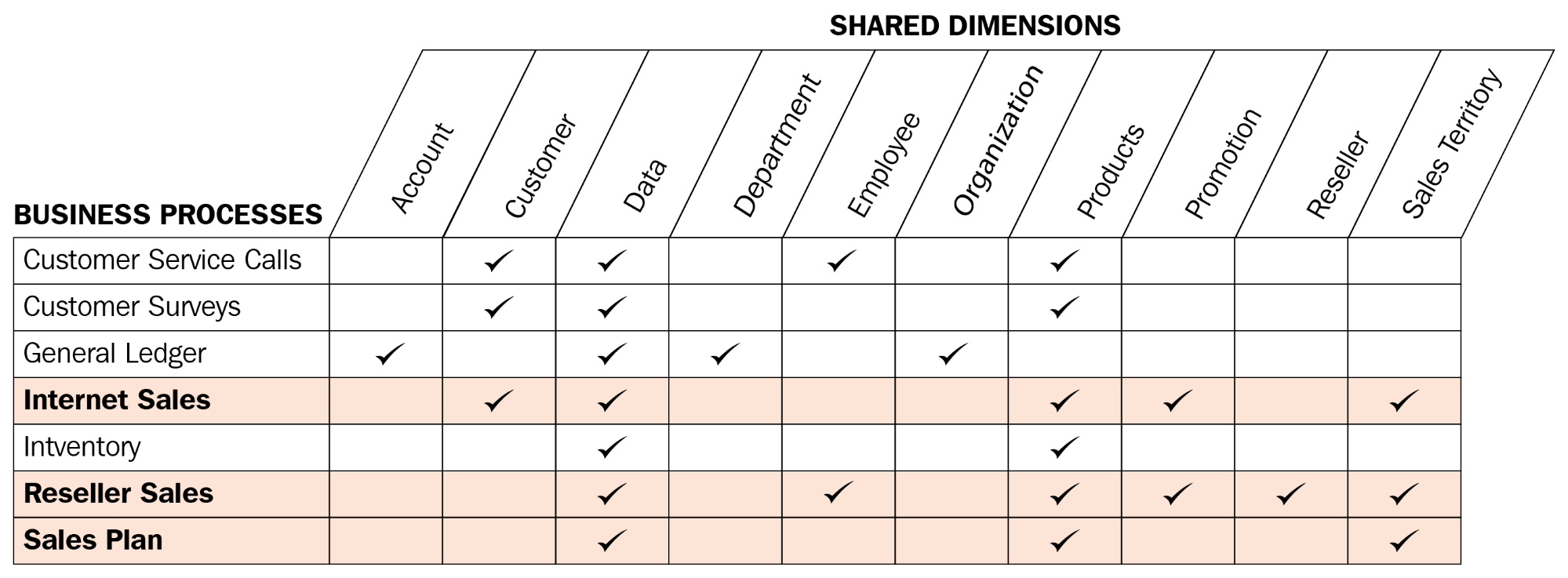The fundamentals of the dataset should be designed so that it can support future BI and analytics projects and other business teams requiring access to the same data. The dataset will be tasked with delivering both accurate and consistent results across teams and use cases as well as providing a familiar and intuitive interface for analysis.
To promote reusability and project communication, a data warehouse bus matrix of business processes and shared dimensions is recommended:

Each row reflects an important and recurring business process, such as the monthly close of the general ledger, and each column represents a business entity, which may relate to one or several of the business processes. The shaded rows (Internet Sales, Reseller Sales, and Sales Plan) identify the business processes that will be implemented as their own star schemas for this project. The business matrix can be developed in collaboration with business stakeholders, such as the corporate finance manager, as well as source system and business intelligence or data warehouse SMEs.
Additional business processes, such as maintaining product inventory levels, could potentially be added to the same Power BI dataset in a future project. Importantly, these future additions could leverage existing dimension tables, such as a Product table, including its source query, column metadata, and any defined hierarchies.



